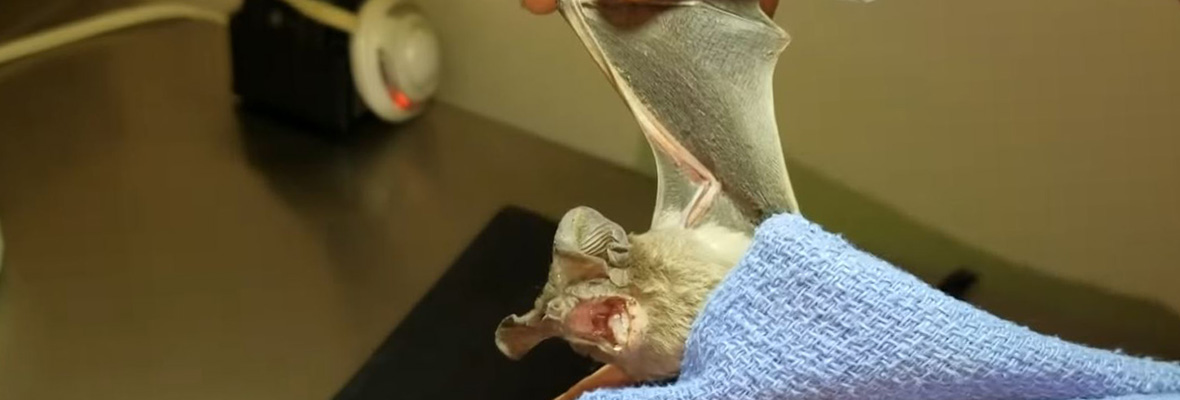An Introduction to the Mexican Freetail Bat
Speeding through the night at over sixty miles per hour, there's a pretty high chance you'd never see the Mexican Freetail Bat in the air, but this is one of the most common species, especially in specific parts of the USA.
This bat is special for a whole number of reasons. It creates the most guano (bat feces), and the entire colony can fly much higher than any other bat species. As if those facts weren't extraordinary enough, the species can also form colonies that are much bigger than anything else seen on earth from animals that are considered warm-blooded.

What Does the Mexican Freetail Bat Look Like?
We wish to be nice to this particular bat species, but when you're being honest about things the Mexican Freetail Bat is actually quite an unremarkable little bat. It just looks very generically bat-like. Dark in color, usually in shades of browns, blacks and grays, you might even describe them as ugly, with a weird little overbite.
Where Does the Mexican Freetail Bat Live?
The Mexican Freetail Bat is found in most places across the United States, but it is so abundant in Texas that the state actually named the species as the “state flying mammal”.
You will actually find this animal is quite a few places across Western USA, and they even have populations as far south as South America. Being very fast bats — clocking up sixty miles an hour and more — they are fairly well-travelled, many of the species migrating from Texas to warmer places, such as Mexico, when the winter comes. Their migration patterns are extraordinary, with many colonies flying as high as ten thousand feet up. This is not seen from any other bat species and certainly makes this one very special. (And also very difficult to catch … )
The Mexican Freetail Bat loves forests filled with pine oaks and jumpier woodlands, preferring areas that are known for arid (or semi-arid) climates. In more rural places you can find them in exactly the places you would expect to find them — in tree hollows and caves, old mines, derelict or rundown buildings, etc. They actually find similar places to roost in more urban habitats too, just replace caves with manmade attics and tree hollows with bridges and similar spaces.
What Does the Mexican Freetail Bat Eat?
Mexican Freetail Bats eat much the same as any other bat species — insects that fly. The thing that sets this species apart from others is that it tends to stay out much longer and later at night. Most other bat species will come out and head back in again multiple times over the night, with a lot of the activity focused on sunset and sunrise, or just after.
The Mexican Freetail Bat, on the other hand, has been studied feeding for almost the entire duration of the night. When there are millions of bats in a single colony, competition must be fierce, so feeding for prolonged periods of time is almost considered necessary.
Pregnant or nursing bats eat much more than males or females that have not successfully mated as you would expect, but hungry, pregnant females can consume their own body weight in insects, in just one night.
When are Mexican Freetail Bats Born?
Although this bat species will come together and mate BEFORE they migrate to Mexico (their namesake), the females do not fertilize her eggs right away. She will store the sperm until towards the end of winter (February-March). This will be around the time that bats return to North America from their sunnier winter migrations.
Females come together in huge groups during spring to create maternity roosts, and these colonies can carry millions of female bats together. Male colonies are generally much smaller, reaching a hundred thousand bats at most, and they do not assist with the rearing of young.
Females will usually give birth in the early weeks of summer — the last few weeks of May and the first few weeks in June. For around an hour, mother and pups will stay attached (usually one or two babies at a time), but the elders will soon retreat to an “adult” roost that is close to the youngsters, but not too close. (These parents need their sleep too!)
The mothers will feed and care for pups until they are about two months old, and that's when they will reach adult size. They are old enough to feed themselves at that point — go out hunting for food. Many young bats will actually not survive for longer than a few months, only the strongest few survive to reach a year old. This is when females CAN reach sexual maturity (although it is usually a few months after this), but males can take slightly longer — six months or so longer.
Go back to the Bat Removal home page or email us for more info about An Introduction to the Mexican Freetail Bat

